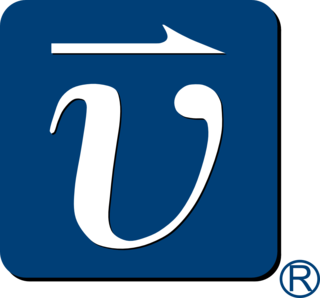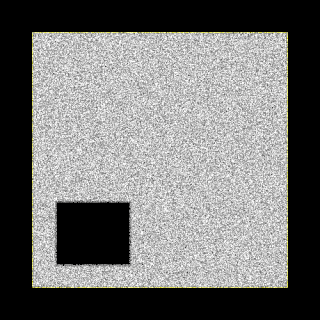
Computational fluid dynamics (CFD) is a branch of fluid mechanics that uses numerical analysis and data structures to analyze and solve problems that involve fluid flows. Computers are used to perform the calculations required to simulate the free-stream flow of the fluid, and the interaction of the fluid with surfaces defined by boundary conditions. With high-speed supercomputers, better solutions can be achieved, and are often required to solve the largest and most complex problems. Ongoing research yields software that improves the accuracy and speed of complex simulation scenarios such as transonic or turbulent flows. Initial validation of such software is typically performed using experimental apparatus such as wind tunnels. In addition, previously performed analytical or empirical analysis of a particular problem can be used for comparison. A final validation is often performed using full-scale testing, such as flight tests.

The lattice Boltzmann methods (LBM), originated from the lattice gas automata (LGA) method (Hardy-Pomeau-Pazzis and Frisch-Hasslacher-Pomeau models), is a class of computational fluid dynamics (CFD) methods for fluid simulation. Instead of solving the Navier–Stokes equations directly, a fluid density on a lattice is simulated with streaming and collision (relaxation) processes. The method is versatile as the model fluid can straightforwardly be made to mimic common fluid behaviour like vapour/liquid coexistence, and so fluid systems such as liquid droplets can be simulated. Also, fluids in complex environments such as porous media can be straightforwardly simulated, whereas with complex boundaries other CFD methods can be hard to work with.
The Advection Upstream Splitting Method (AUSM) is a numerical method used to solve the advection equation in computational fluid dynamics. It is particularly useful for simulating compressible flows with shocks and discontinuities.

Airflow Sciences Corporation (ASC) is an engineering consulting company based in Livonia, Michigan, USA that specializes in the design and optimization of equipment and processes involving flow, heat transfer, combustion, and mass transfer. Engineering techniques include Computational Fluid Dynamics (CFD) modeling, experimental laboratory testing, and field measurements at client sites. ASC works for a wide range of industries world-wide, including power generation, manufacturing, aerospace, HVAC, food processing, biomedical, pollution control, oil and gas, rail, legal, and automotive.

Lattice gas automata (LGCA), or lattice gas cellular automata, are a type of cellular automaton used to simulate fluid flows, pioneered by Hardy–Pomeau–de Pazzis and Frisch–Hasslacher–Pomeau. They were the precursor to the lattice Boltzmann methods. From lattice gas automata, it is possible to derive the macroscopic Navier–Stokes equations. Interest in lattice gas automaton methods levelled off in the early 1990s, as the interest in the lattice Boltzmann started to rise. However, an LGCA variant, termed BIO-LGCA, is still widely used to model collective migration in biology.

Abaqus FEA is a software suite for finite element analysis and computer-aided engineering, originally released in 1978. The name and logo of this software are based on the abacus calculation tool. The Abaqus product suite consists of five core software products:
- Abaqus/CAE, or "Complete Abaqus Environment". It is a software application used for both the modeling and analysis of mechanical components and assemblies (pre-processing) and visualizing the finite element analysis result. A subset of Abaqus/CAE including only the post-processing module can be launched independently in the Abaqus/Viewer product.
- Abaqus/Standard, a general-purpose Finite-Element analyzer that employs implicit integration scheme (traditional).
- Abaqus/Explicit, a special-purpose Finite-Element analyzer that employs explicit integration scheme to solve highly nonlinear systems with many complex contacts under transient loads.
- Abaqus/CFD, a Computational Fluid Dynamics software application which provides advanced computational fluid dynamics capabilities with extensive support for preprocessing and postprocessing provided in Abaqus/CAE - discontinued in Abaqus 2017 and further releases.
- Abaqus/Electromagnetic, a Computational electromagnetics software application which solves advanced computational electromagnetic problems.

Next Limit Technologies is a computer software company headquartered in Madrid, Spain. Founded in 1998 by engineers Victor Gonzalez and Ignacio Vargas the firm develops technologies in the field of digital simulation and visualization. In December 2016, the XFlow division was acquired by Dassault Systèmes.

Philip L. Roe is a Professor of Aerospace Engineering at the University of Michigan in Ann Arbor. He is known for his work in the field of Computational Fluid Dynamics and Magnetohydrodynamics. Roe made fundamental contributions to the development of high-resolution schemes for hyperbolic conservation laws. He has developed approximate Riemann solver called Roe solver for compressible flows with shocks.

CD-adapco was a multinational computer software company that authored and distributed applications used for computer-aided engineering, best known for its computational fluid dynamics (CFD) products. In 2016 the company was acquired by Siemens Digital Industries Software.
Sauro Succi is an Italian scientist, internationally credited for being one of the founders of the successful Lattice Boltzmann method for fluid dynamics and soft matter.

ESI Group provides virtual prototyping software that simulates a product's behavior during testing, manufacturing and real-life use. Engineers in a variety of industries use its software to evaluate the performance of proposed designs in the early phases of the project with the goal of identifying and eliminating potential design flaws.

The Hardy–Pomeau–Pazzis (HPP) model is a fundamental lattice gas automaton for the simulation of gases and liquids. It was a precursor to the lattice Boltzmann methods. From lattice gas automata, it is possible to derive the macroscopic Navier-Stokes equations. Interest in lattice gas automaton methods levelled off in the early 1990s, due to rising interest in the lattice Boltzmann methods.
OpenLB is an object-oriented implementation of the lattice Boltzmann methods (LBM). It is the first implementation of a generic platform for LBM programming, which is shared with the open source community (GPLv2). The code is written in C++ and is used by application programmers as well as developers, with the ability to implement custom models OpenLB supports complex data structures that allow simulations in complex geometries and parallel execution using MPI, OpenMP and CUDA on high-performance computers. The source code uses the concepts of interfaces and templates, so that efficient, direct and intuitive implementations of the LBM become possible. The efficiency and scalability has been checked and proved by code reviews. A user manual and a source code documentation by DoxyGen are available on the project page.

Flowmaster Ltd. was a leading British Engineering Simulation Software company based in Towcester, UK. Its flagship 1D CFD product, also named ‘Flowmaster’, was first released commercially in 1987 although initial versions went back to the early 1980s having originated from BHRA, the not-for-profit British Hydromechanics Research Association, later to become the BHR Group.

The Ligier JS P3 is an LMP3 Le Mans Prototype. It was created by Onroak Automotive, and named in partnership with former French driver Guy Ligier. It was built to meet ACO LMP3 standards, and is active in various LMP3 championships worldwide, such as the European Le Mans Series, IMSA Prototype Challenge, and the Asian Le Mans Series. The car has proven to be immensely popular in the category, with over 100 cars being produced since 2015. It has also proved to be one of the most successful prototypes in the class, with a total of 103 overall wins and class victories from 132 races entered by the car. It is set to be succeeded in 2020, by the Ligier JS P320, when new LMP3 regulations are set to come into place.
William Henry Matthaeus is an American astrophysicist and plasma physicist. He is known for his research on turbulence in magnetohydrodynamics (MHD) and astrophysical plasmas, for which he was awarded the 2019 James Clerk Maxwell Prize for Plasma Physics.
Hudong Chen is a physicist.

Lyle Norman Long is an academic, and computational scientist. He is a Professor Emeritus of Computational Science, Mathematics, and Engineering at The Pennsylvania State University, and is most known for developing algorithms and software for mathematical models, including neural networks, and robotics. His research has been focused in the fields of computational science, computational neuroscience, cognitive robotics, parallel computing, and software engineering.











